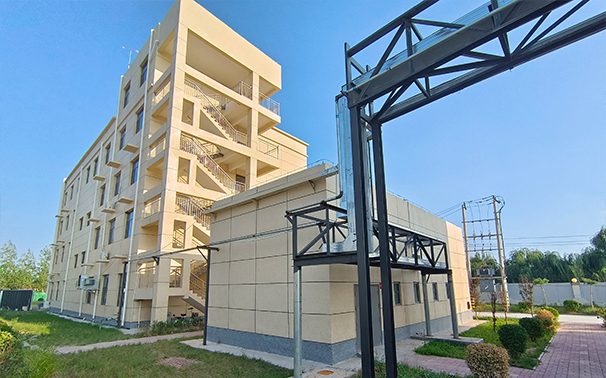polyacrylamide uses
The Versatile Applications of Polyacrylamide
Polyacrylamide (PAM) is a polymer that has gained immense popularity across various industries due to its unique properties and versatility. Composed of acrylamide monomers, this synthetic polymer can be produced in various forms, including powders, granules, and solutions. Its applications span multiple domains, including environmental management, agriculture, food processing, and biomedical sciences. This article explores the diverse uses of polyacrylamide, underscoring its significance in modern technology and everyday life.
Environmental Applications
One of the most critical uses of polyacrylamide is in water treatment. PAM is utilized as a flocculant, a substance that promotes the agglomeration of particles in water, facilitating the removal of suspended solids. This property is particularly valuable in wastewater treatment plants, where PAM can help clarify effluents by binding and settling particles. The enhanced settling rates lead to reduced treatment times and improved water quality, making PAM an essential component in modern water purification processes.
Moreover, PAM plays a pivotal role in soil erosion control. When applied to soil or water streams, it forms a gel-like structure that stabilizes the soil, reducing runoff and preventing the loss of nutrients. This is especially beneficial in agricultural settings, where maintaining soil health is critical. Additionally, PAM is used in hydromulching, a technique that helps establish vegetation on bare soils, effectively preventing erosion while promoting plant growth.
Agricultural Uses
In agriculture, polyacrylamide's ability to retain soil moisture is of utmost importance. When added to soil, PAM helps increase water retention capacity, allowing crops to access moisture more efficiently. This characteristic is particularly beneficial in arid and semi-arid regions where water scarcity is a pressing issue. The improved moisture retention leads to higher crop yields and reduces the frequency of irrigation, contributing to sustainable farming practices.
PAM is also used as a soil conditioner. It enhances soil structure by promoting the aggregation of soil particles, which improves aeration and root penetration. This not only boosts the overall health of the soil but also encourages beneficial microbial activity. Additionally, PAM can assist in the establishment of turf and sod, making it a valuable resource for landscaping and sports fields as well.
polyacrylamide uses

Industrial and Food Processing
In the industrial sector, polyacrylamide is employed in various applications, such as oil recovery and mineral processing. In enhanced oil recovery, PAM is used to improve the efficiency of oil extraction by reducing fluid movement resistance in porous media. This application ensures that more oil is retrieved from reservoirs, enhancing productivity and resource utilization.
PAM is also used in food processing, primarily as a clarifying agent in juice and beverage production. Its ability to promote sedimentation facilitates the removal of impurities and ensures a clear final product. Moreover, it serves as a thickening agent in certain food items, contributing to the desired texture and consistency.
Biomedical Applications
The biomedical field is another area where polyacrylamide's properties shine. PAM is utilized in the development of hydrogels, which are crucial for various applications, including drug delivery, tissue engineering, and wound healing. The biocompatibility and tunable properties of polyacrylamide make it an excellent choice for creating scaffolds that support cell growth and tissue regeneration.
In laboratory settings, polyacrylamide is predominantly used in gel electrophoresis, a technique that separates macromolecules like proteins and nucleic acids based on their size. This method is fundamental to molecular biology research, diagnostics, and biotechnology.
Conclusion
The diverse uses of polyacrylamide highlight its significance across various sectors. From environmental management to industrial processes and biomedical applications, PAM provides innovative solutions that enhance efficiency, sustainability, and product quality. As research and technology continue to evolve, the potential applications of polyacrylamide are likely to expand, cementing its role as a crucial polymer in addressing contemporary challenges. Its ability to improve water retention in agriculture, facilitate wastewater treatment, and contribute to biomedical advancements underscores the multifaceted importance of this remarkable polymer in our everyday lives and industries.
-
LK-319 Special Scale And Corrosion Inhibitor For Steel Plants: Advanced Solutions for Industrial Water SystemsNewsAug.22,2025
-
Flocculant Water Treatment: Essential Chemical Solutions for Purification ProcessesNewsAug.22,2025
-
Isothiazolinones: Versatile Microbial Control Agents for Industrial and Consumer ApplicationsNewsAug.22,2025
-
Scale Inhibitor: Key Solutions for Water System Scale PreventionNewsAug.22,2025
-
Organophosphonates: Versatile Scale Inhibitors for Industrial Water SystemsNewsAug.22,2025
-
Scale and Corrosion Inhibitor: Essential Chemical Solutions for Water System MaintenanceNewsAug.22,2025





